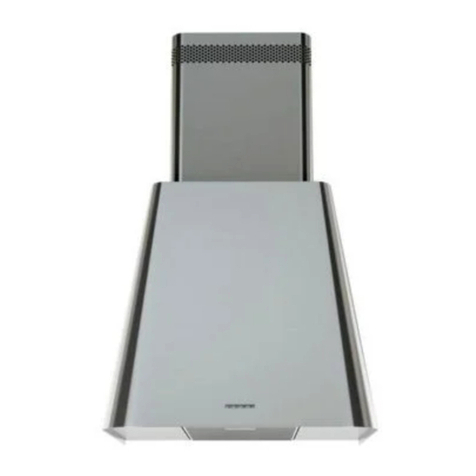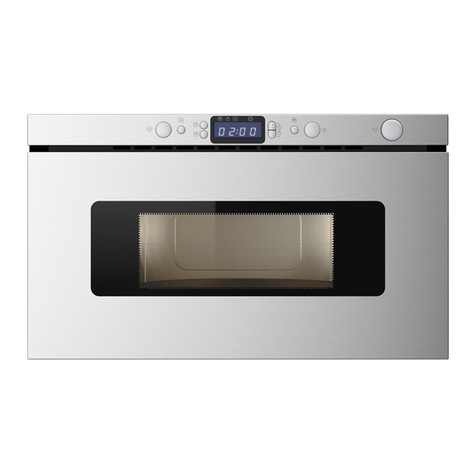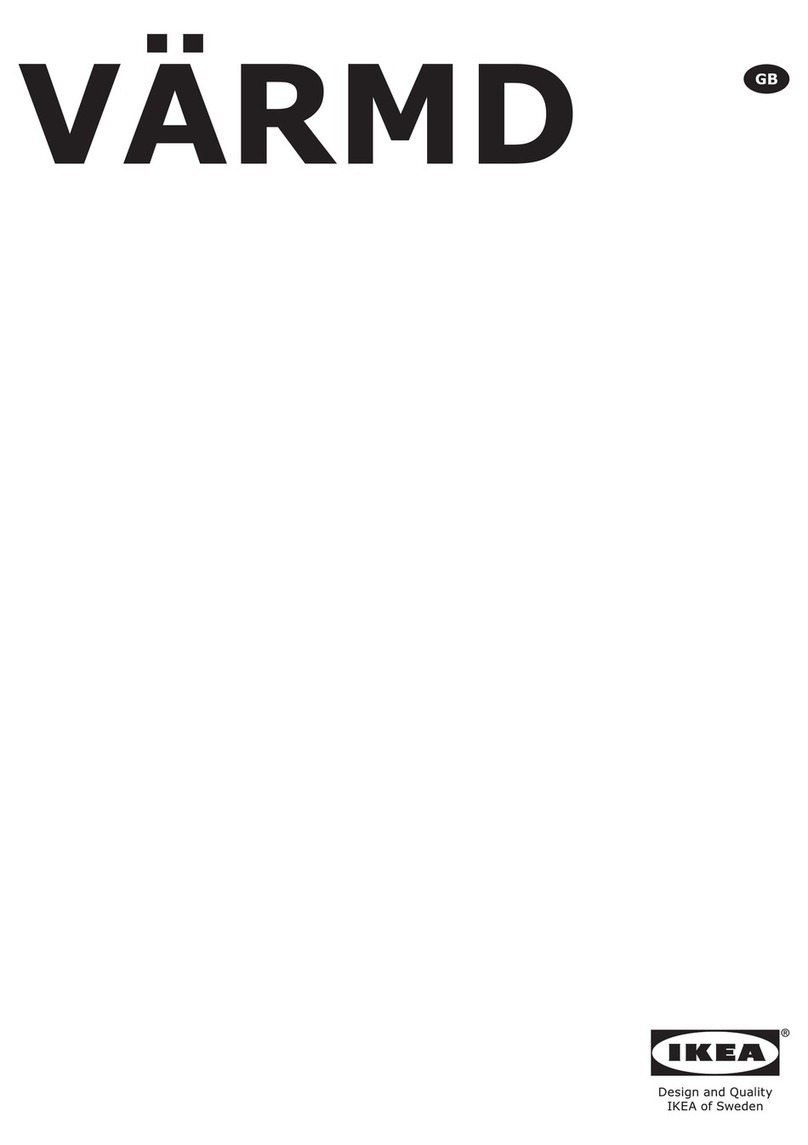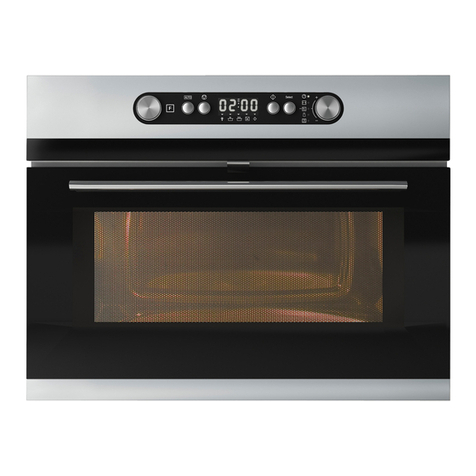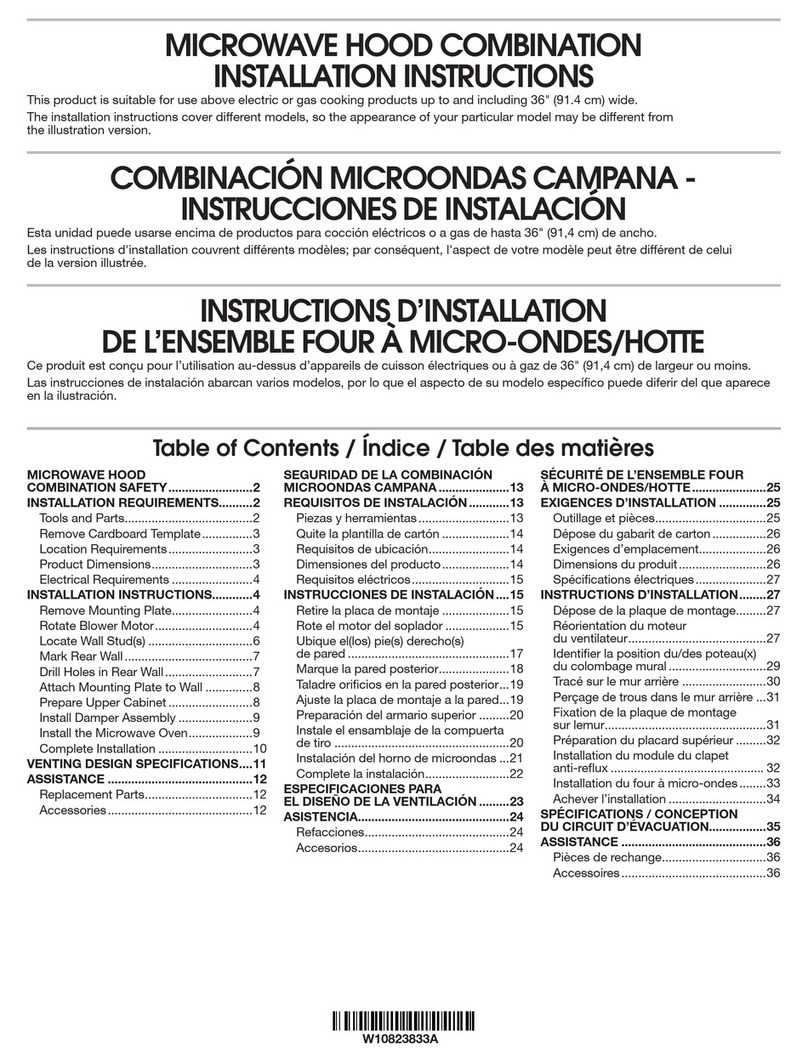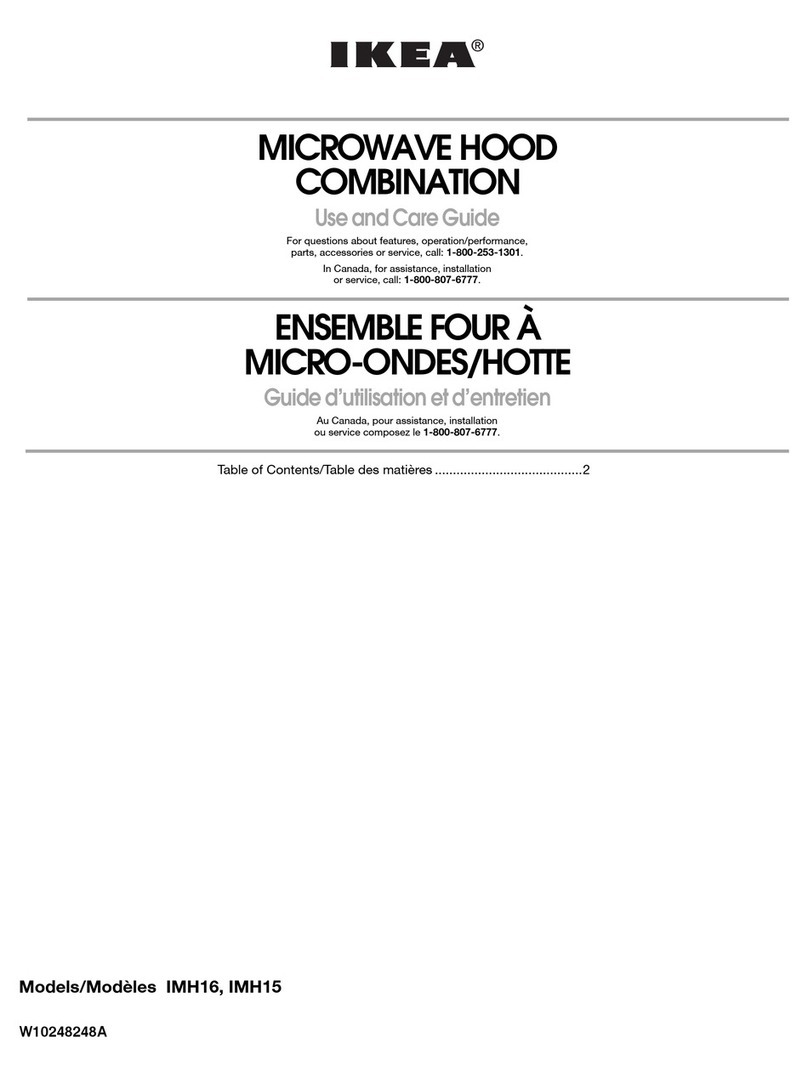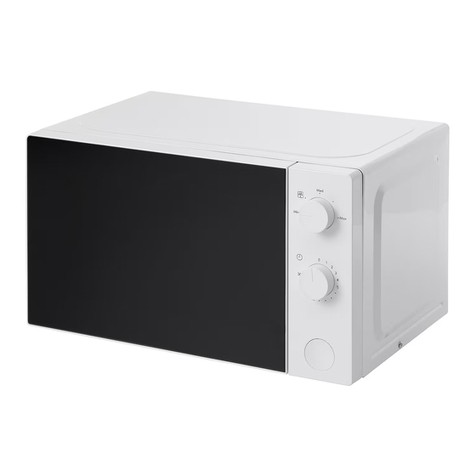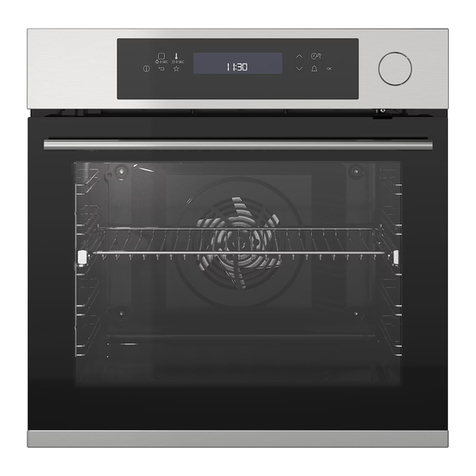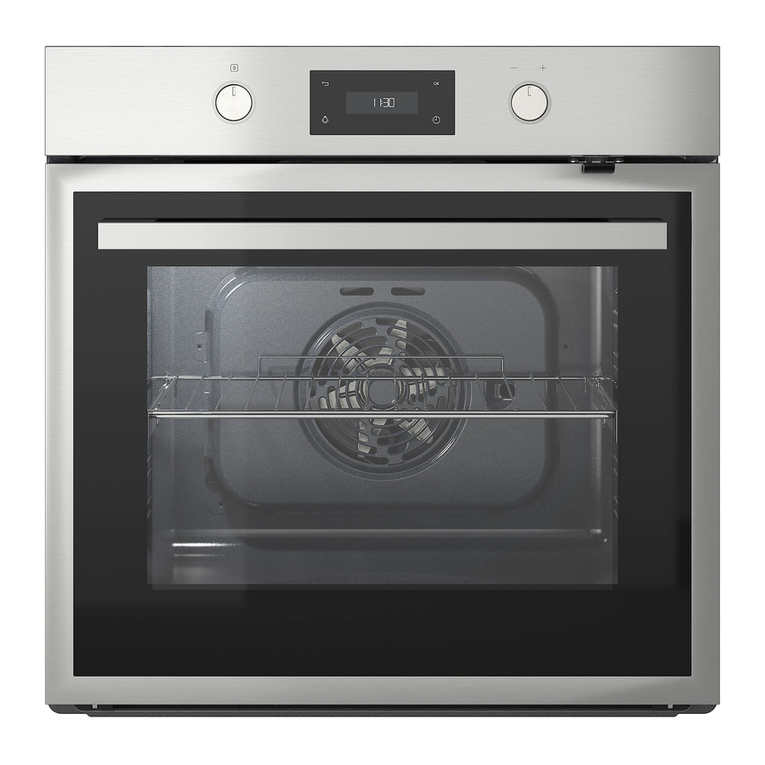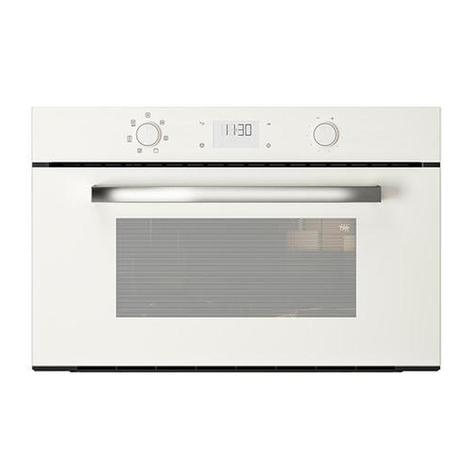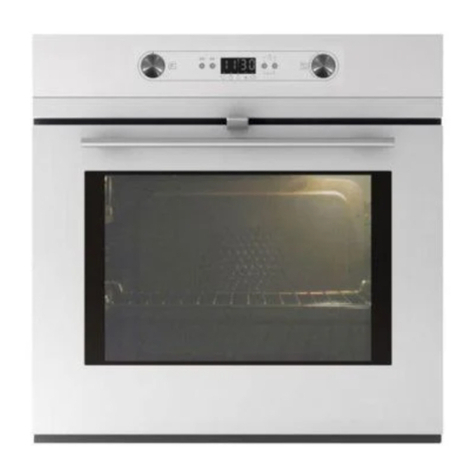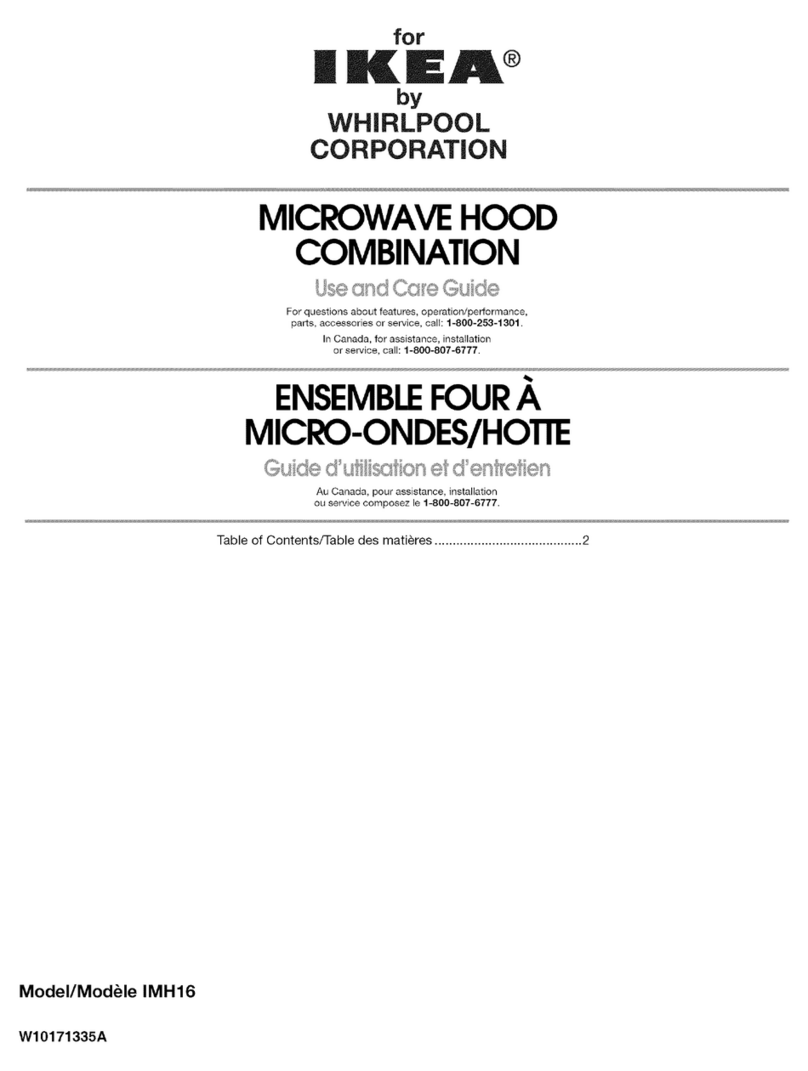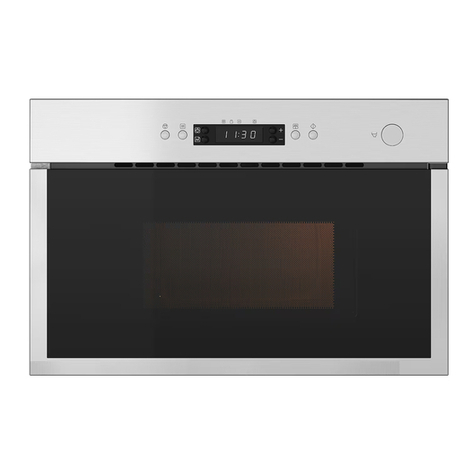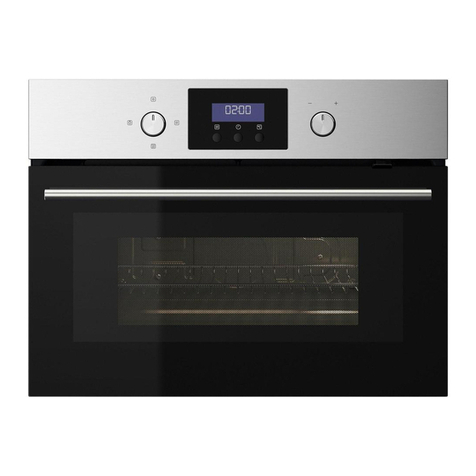ENGLISH 10
Start protection / key lock
This automatic safety function is activated
one minute after the oven has returned to
“stand by mode”. (The oven is in “stand by”
when the 24-hour clock is displayed or if the
clock has not been set, when the display is
blank).
The door must be opened and closed e.g.
putting food into it, before the safety lock is
released. Else the display will show “DOOR”.
Pause or stop cooking
To pause cooking:
The cooking can be paused to check, turn
or stir the food by opening the door. The
setting will be maintained for 10 minutes.
If you don’t want to continue cooking:
Remove the food, close the door and press
the STOP button.
To continue cooking:
Close the door and press the Start button
once. The cooking is resumed from where it
was paused.
Pressing the start button twice will increase
the time by 30 seconds.
A beep will signal once a minute for 10
minutes when the cooking is nished.
Press the STOP button or open the door to
cancel the signal.
NOTE: The oven will only hold the settings
for 60 seconds if the door is opened and
then closed after the cooking is nished.
Kitchen Timer
Use this function when you need a kitchen
timer to measure exact time for various
purposes such as cooking eggs or letting the
dough rise before baking etc.
1. Press the Clock button
2. Turn the adjust knob to set the time to
measure.
3. Press the Start button.
Flashing colons indicate that the timer is
running.
An acoustic signal will be heard when the
timer has nished to count down.
One press on the clock button displays how
much is left on the Timer. It’s displayed for 3
seconds and then returns to displaying the
cooking time (if you are currently cooking).
To stop the kitchen timer when it is operating
in the background of another function,
you must rst recall it to the foreground by
pressing the Clock button and then stop it by
pressing the Stop button.
Clock
When the appliance is rst plugged in or
after a power failure, the display is blank.
If the clock is not set, the display will remain
blank until the cooking time is set.
1. Press the Clock button (3 seconds) until
the left-hand digit (hours) icker.
2. Turn the adjust knobto set the hours.
3. Press the Clock button again. (the two
right hand digits (minutes) icker).
4. Turn the adjust knob to set the minutes.
5. Press the Clock button again.
The clock is set and in operation.
If you wish to remove the clock from the
display once it has been set, simply press the
Clock button again for 3 seconds and then
press the Stop button.
To reinstate the clock , follow the above
procedure.
NOTE : keep the door open while setting the
clock. This gives you 10 minutes to complete
the setting of the Clock. Otherwise, each
step must be accomplaished within 60
seconds.
Cook and reheat with microwaves
Use this function for normal cooking and
reheating, such as vegetables, sh, potatoes
and meat.
1. Press the Power button to set the power.
2. Turn the adjust knob to set the cooking
time.
3. Press the Start button.
Daily use
